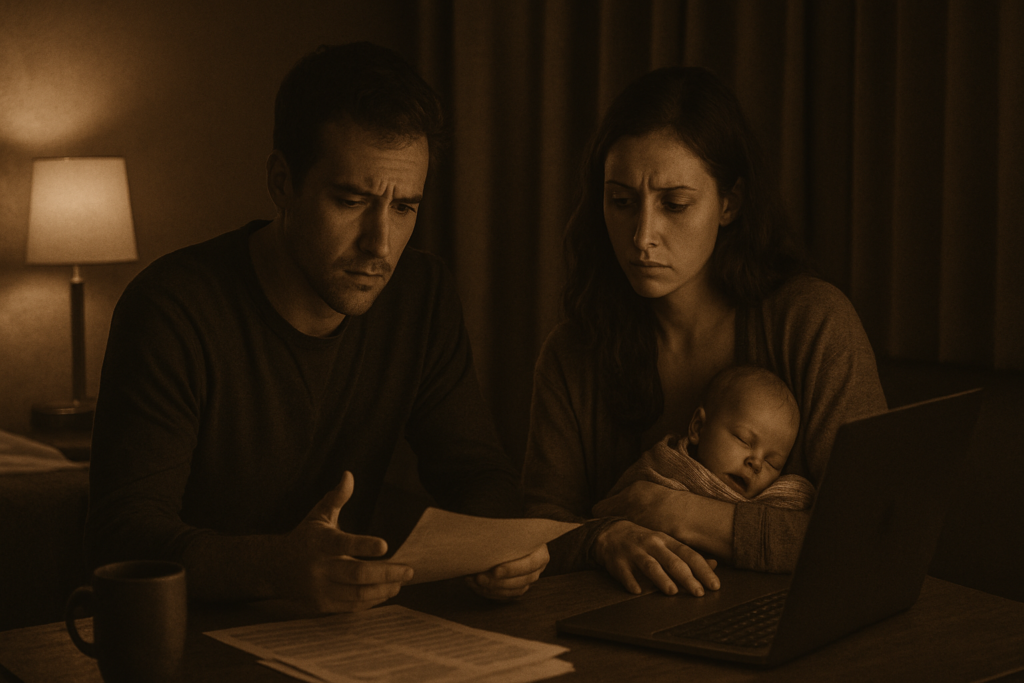In today’s unpredictable world, having a financial safety net is crucial for every family. That’s where an emergency fund comes in – it’s like a financial cushion that can help you weather unexpected storms without derailing your long-term goals. As a seasoned financial writer, I’ve seen firsthand the peace of mind that comes from having a robust emergency fund in place.
In this article, I’ll delve into the importance of building an emergency fund and why it should be a top priority for every family. From unforeseen medical expenses to sudden job losses, life can throw curveballs when you least expect it. By proactively setting aside funds for emergencies, you not only protect your family’s financial future but also create a sense of financial security that is priceless.
Understanding the Importance of an Emergency Fund
As a financial writer, I recognize the critical role an emergency fund plays in providing financial security for families.
The Role of Emergency Funds in Financial Stability
Having an emergency fund is essential for maintaining financial stability. It acts as a safety net, offering a sense of security during unexpected situations.
Key Benefits of Having an Emergency Fund
An emergency fund provides peace of mind, ensuring that families can cover unforeseen expenses without dipping into their savings or going into debt. It also protects long-term financial goals by preventing the need to liquidate assets during emergencies.
How Much Should Your Emergency Fund Be?
To determine the appropriate amount for your emergency fund, start by assessing your family’s monthly expenses. Calculate all essential costs, including mortgage or rent, utilities, groceries, transportation, insurance, and any debt repayments. Knowing your average monthly expenditure helps in setting a realistic savings goal to cover these expenses in case of unforeseen circumstances.
When considering the size of your emergency fund, it’s crucial to factor in the number of dependents in your family. The more people relying on your income, the larger your emergency fund should be. Additionally, if your income is variable, it’s advisable to have a more substantial emergency fund to account for potential fluctuations in earnings.
To adjust your savings goal based on income and dependents, consider saving at least three to six months’ worth of expenses as a baseline. For families with multiple dependents or a single income provider, aiming for a larger emergency fund, ideally six to nine months’ worth of expenses, provides an extra layer of security. Tailoring your savings target to your specific financial situation ensures that you’re adequately prepared for any unexpected financial challenges that may arise.
Steps to Building Your Emergency Fund
When it comes to building an emergency fund, taking the right steps is crucial to ensure financial stability during unexpected times. Here are key strategies to help you establish a robust safety net for your family:
Where to Start: Setting up Effective Savings Mechanisms
To kickstart your emergency fund, begin by automating your savings. Setting up automatic transfers from your checking account to a designated savings account each month is a simple yet powerful way to consistently set aside funds. By automating savings, you prioritize building your emergency fund without the temptation to spend the money elsewhere.
Ensure that your emergency fund is easily accessible but separate from your regular checking account to prevent impulsive spending. Opt for a high-yield savings account that offers competitive interest rates to help your fund grow over time. By designating a specific account for your emergency fund, you create a mental distinction that emphasizes its importance and guards against using it for non-emergencies.
Practical Strategies for Consistent Savings
Track your expenses diligently to identify areas where you can cut back and redirect funds toward your emergency fund. Budgeting tools and apps can streamline this process, providing insights into your spending habits and pinpointing opportunities to increase savings. By prioritizing needs over wants and making conscious spending decisions, you free up more resources to bolster your emergency fund.
Consider implementing a “pay yourself first” approach by allocating a portion of each paycheck directly to your emergency fund before covering other expenses. By treating savings as a non-negotiable expense, you reinforce a savings mindset and steadily build your fund over time. Additionally, setting specific savings goals and milestones can motivate you to stay on track and celebrate progress along the way.
By combining strategic financial habits with a proactive savings plan, you can steadily grow your emergency fund and shield your family from unforeseen financial hardships. Staying committed to these steps will not only fortify your financial resilience but also provide peace of mind knowing that you’re prepared for whatever challenges may arise.
Choosing the Right Place to Keep Your Emergency Fund
When it comes to safeguarding your emergency fund, it’s crucial to choose the most appropriate storage option. By selecting the right account for your fund, you can ensure both safety and accessibility, two key factors in times of unexpected financial need. Let’s explore the best strategies for storing your emergency fund effectively.
Options for Safe and Accessible Storage
- Savings Account: Consider keeping your emergency fund in a high-yield savings account. These accounts offer a higher interest rate compared to traditional savings accounts, allowing your money to grow while remaining easily accessible for emergencies.
- Money Market Account: Another suitable option is a money market account, which provides a higher interest rate than standard savings accounts. Money market accounts often come with check-writing capabilities, making them a convenient choice for quick access to your funds.
- Certificates of Deposit (CDs): For a potentially higher interest rate, you can opt for Certificates of Deposit. While CDs offer better returns, they usually require you to lock in your funds for a specific term, so ensure you select a term that aligns with your emergency fund needs.
- Interest Rates: Compare the interest rates offered by various financial institutions for savings accounts, money market accounts, and CDs. Choose an account that provides a balance between interest earnings and accessibility.
- Liquidity and Accessibility: Evaluate the liquidity and accessibility of each account type. While CDs may offer higher interest rates, they have penalties for early withdrawal, unlike savings or money market accounts that allow easier access to your funds in emergencies.
- FDIC Insurance: Ensure that the account you choose is FDIC-insured up to the maximum limit. FDIC insurance protects your funds in case the financial institution fails, providing an extra layer of security for your emergency fund.
By carefully considering these options and comparing the benefits of different account types, you can select the most suitable storage option for your emergency fund. Prioritizing safety, accessibility, and growth potential will help you build a robust financial safety net for your family’s peace of mind.
Overcoming Common Challenges
When it comes to building an emergency fund, one of the common challenges many families face is dealing with irregular income. As someone who understands the unpredictability of income streams, I know how challenging it can be to set aside funds consistently. To overcome this obstacle, I suggest creating a budget based on the average monthly income and prioritizing saving a percentage of any surplus during high-earning months to offset the low-earning ones.
Dealing with Irregular Income
Dealing with irregular income can make it difficult to save for an emergency fund. To tackle this challenge, I recommend setting aside a fixed percentage of each paycheck into a separate account specifically designated for emergencies. By committing to this consistent savings habit, I can ensure that I’m gradually building up my emergency fund regardless of fluctuations in income.
Prioritizing Expenses in Tight Financial Times
During tight financial times, it’s crucial to prioritize expenses to ensure that savings for an emergency fund are not neglected. When faced with budget constraints, I prioritize essential expenses such as housing, groceries, and utilities. By cutting back on non-essential items and finding creative ways to reduce costs, I make it a priority to allocate a portion of my income towards my emergency fund to build a secure financial foundation.



